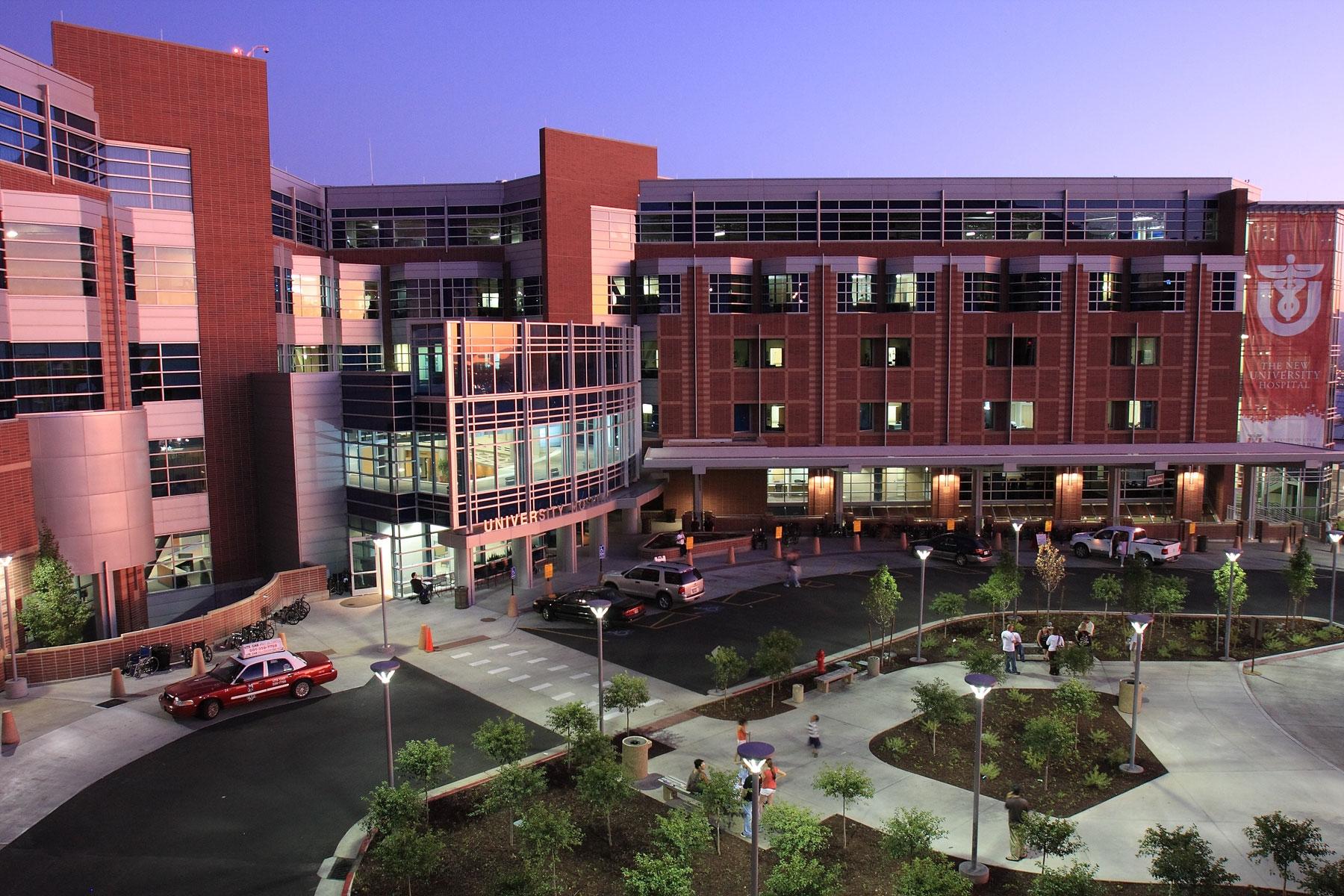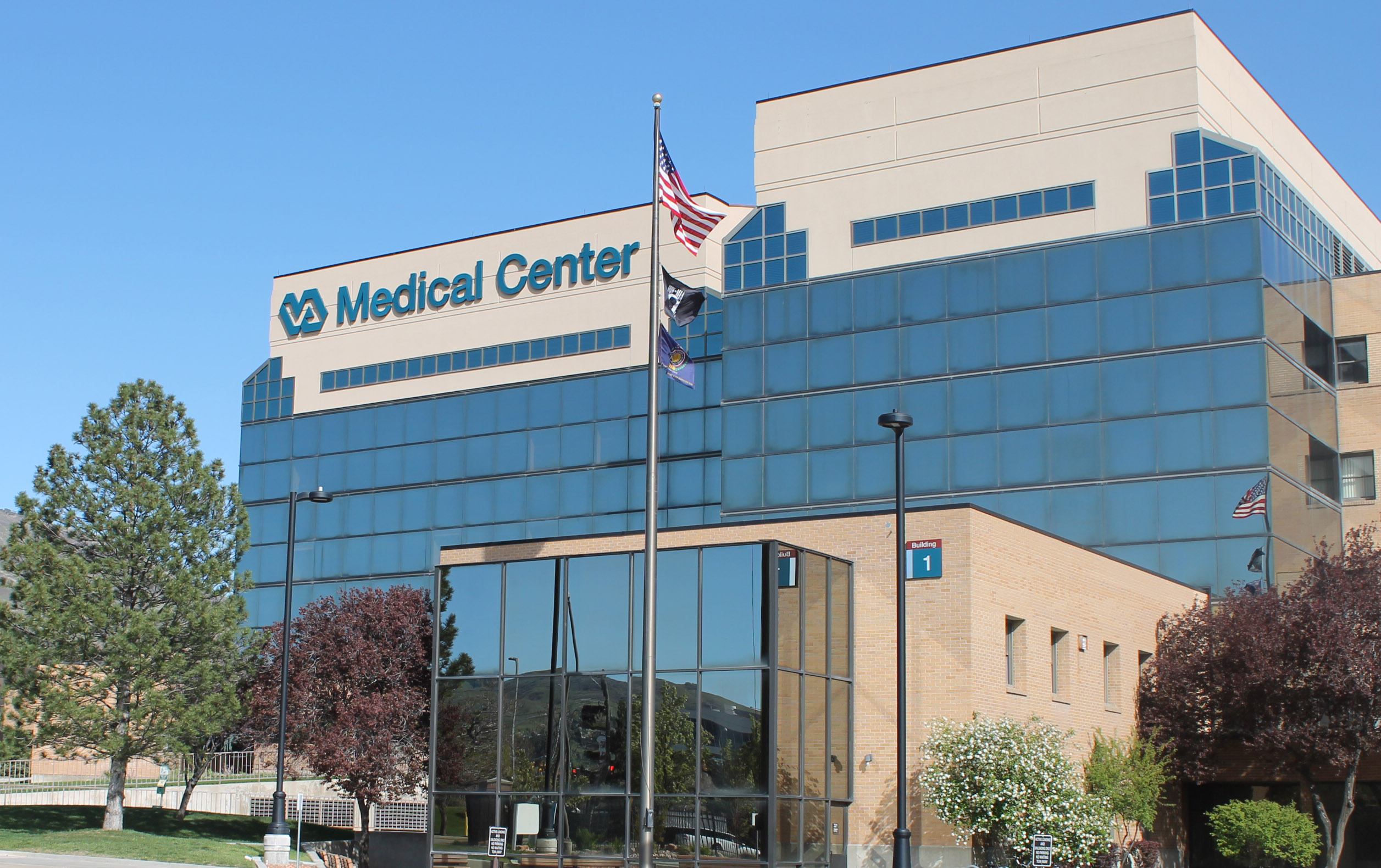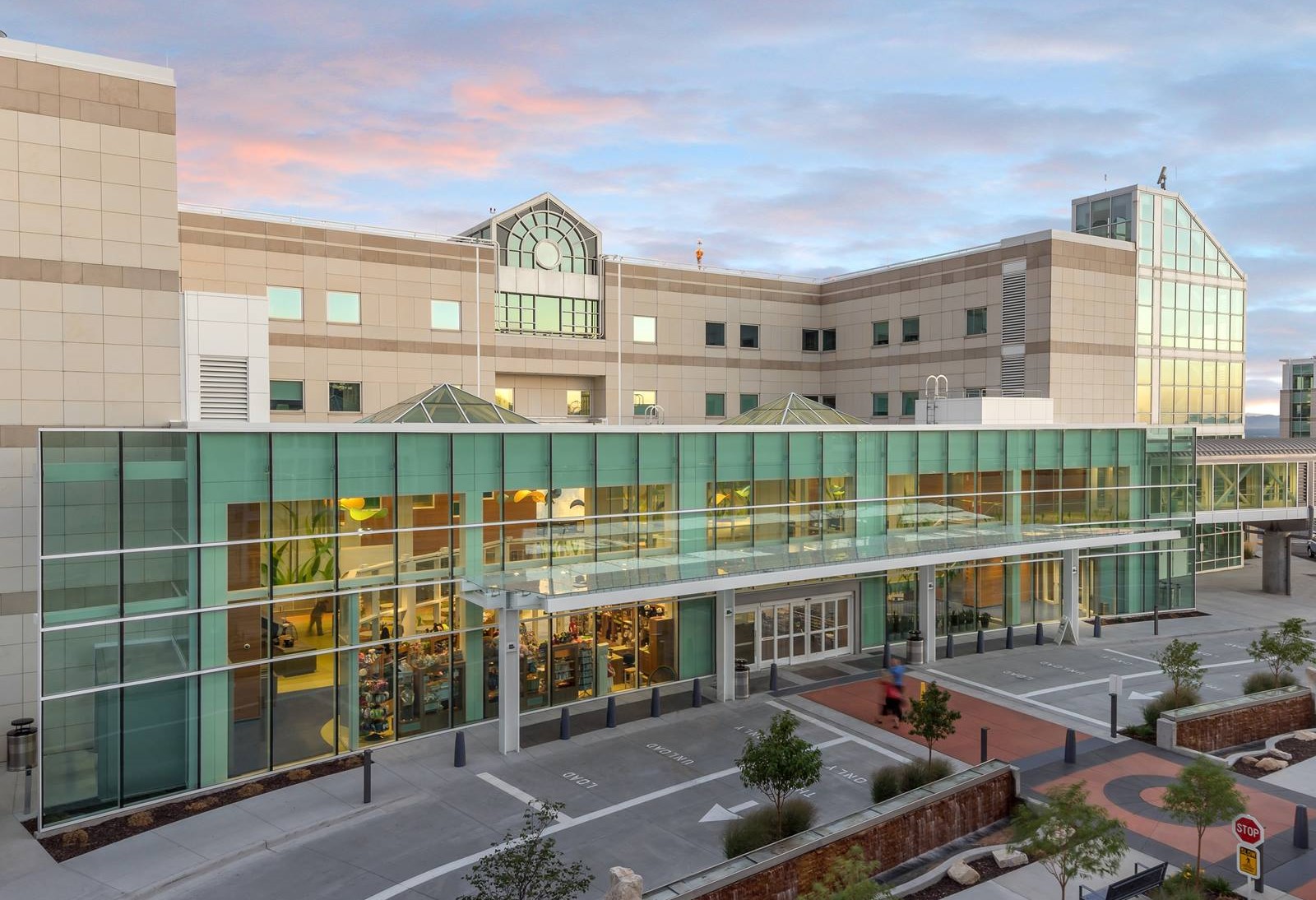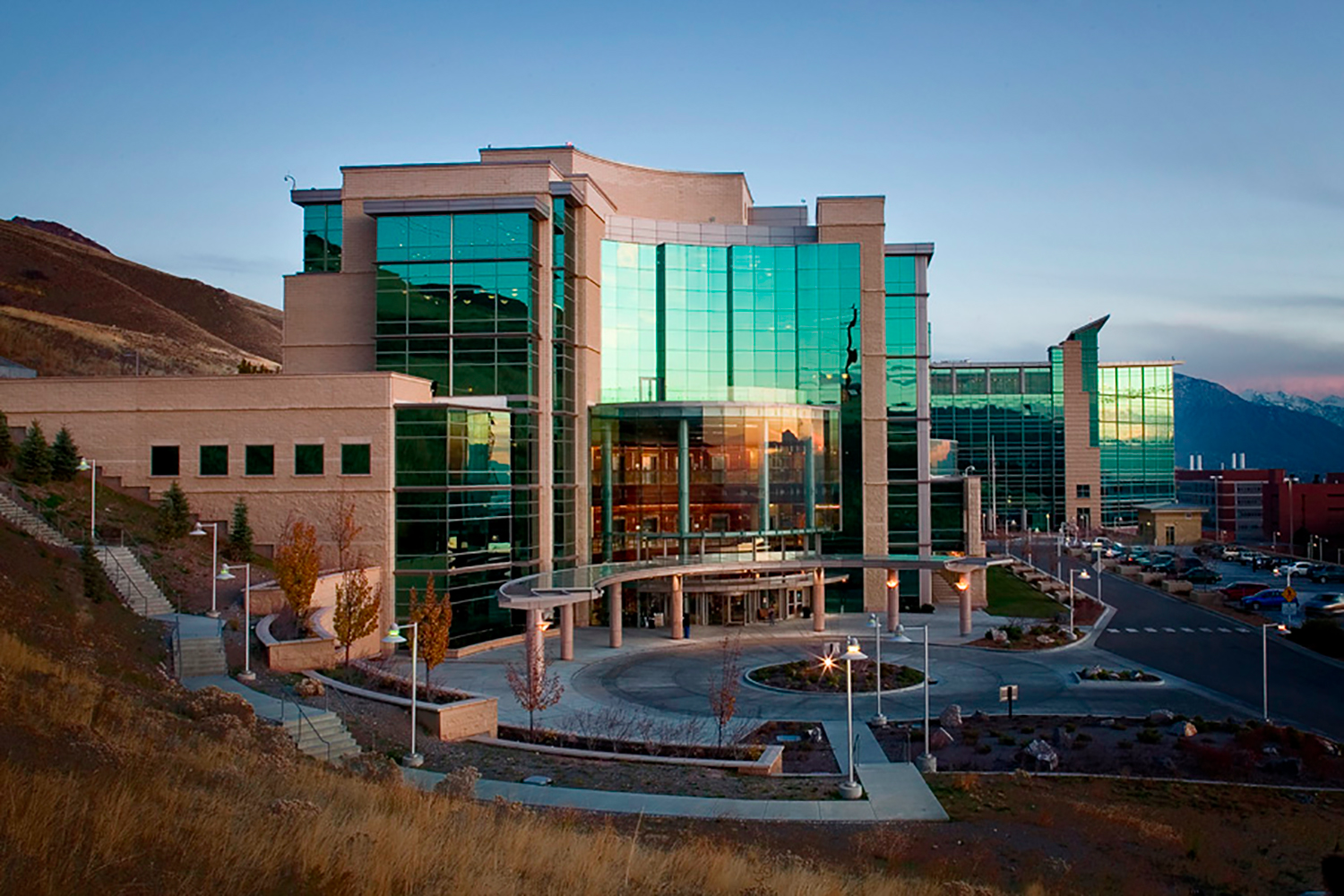
Clinical Training Sites
University of Utah Hospital
Quick Facts
- A primary and tertiary care center
- The only academic hospital in the Mountain West region
- 817 beds total (the largest number in the state of Utah)
- 23-bed neurocritical care unit
- 34-bed neurology/neurosurgery bay with suits for extended video/EEG monitoring
- One of two comprehensive stroke centers in Utah
- A comprehensive epilepsy center
- An emergency-department observation unit

Overview
As a primary care center, the university’s hospital provides general care for patient across the Mountain West. As a tertiary referral center, the university’s hospital also treats more severe conditions that require specialized knowledge and more intensive health monitoring. This is true for the majority of our neurology patients.
The university’s hospital is also the only academic medical center in the entire Mountain West region, which includes the states Arizona, Utah, New Mexico, Montana, Colorado, Idaho, Nevada, and Wyoming.
The highest acuity neurology patients—those who often present challenging medical conditions and often have significant, unpredictable needs—are treated in our neurocritical care unit (NCCU). Those neurology patients may later transition to a step-down unit: a 34-bed neurology/neurosurgery bay containing suites for extended video EEG monitoring of patients with seizures, and with neuro trained nursing staff.
To facilitate emergent evaluations on patients who don’t requiring being admitted to the hospital for more than 24 hours, our neurology services commonly use an emergency-department observation unit as a way to triage the evaluation of patients with disorders such as newly onset seizures.
George E. Wahlen Department of Veterans Affairs Medical Center (VAMC)
Quick Facts
- A tertiary care facility
- The largest veterans facility in the Mountain West
- 121 beds total
- An 81-acre campus
- One of the most modern hospitals in the VA system
- Located approximately a half mile from the University of Utah Hospital

Overview
Several faculty members split their time between the university’s hospital and the VAMC, filling both clinical and research roles. The VAMC has its own up-to-date EEG and EMG laboratories, as well as MRI and CT units and facilities for conventional angiography. Additionally, the VAMC houses several laboratories that participate in cutting-edge research in the areas of neuro-immunology and paraneoplastic neurology, offering a unique opportunity for junior investigators to have the resources and support to begin their research.
While the VAMC may have a small inpatient service, the bulk of care is provided in the outpatient setting across a variety of both general neurology and subspecialty clinics.
Primary Children's Hospital
Quick Facts
- A primary and tertiary care center
- 289 beds total
- a 32-bed, state-of-the-art pediatric intensive care unit,
- a 48-bed neonatal intensive care unit,
- a 30-bed infant unit,
- a 28-bed rehabilitation wing,
- a 26-bed rapid-treatment room for children requiring a hospital stay of less than 24 hours.
- Facilities for both inpatient and outpatient care

Overview
Primary Children's Hospital (PCH) is a major primary and tertiary care center for pediatric patients in the Mountain West region—providing general care for overall patient education and wellness but also capable of providing treatment for more severe conditions that require specialized knowledge and more intensive health monitoring.
The present facility is adjacent to the University of Utah Health Sciences center.
Outpatient Clinics
Quick Facts
- Includes the Clinical Neurosciences Center (CNC) and the Imaging and Neurosciences Center (INC)

Overview
Outpatient clinics occur both on the university’s campus and at the VA hospital. The two main locations on the university’s campus are the Clinical Neurosciences Center (CNC) and Imaging and Neurosciences Center (INC). The CNC is a five-story building connected to the university’s hospital via a walkway. This building houses clinics, academic offices, interventional radiology (IR) suites, operating rooms, MRI scanners, educational spaces, as well as a neuroradiology reading and consultation room. The main clinical area has 44 clinical examination rooms: 22 for neurology and 22 for neurosurgery. It also contains four neuromuscular suites for electrodiagnostic testing (NCS/EMG). The INC, which is a 12,000 square foot clinic in Research Park, is located just five minutes from the hospital campus and linked via a shuttle.
Huntsman Cancer Institute
Quick Facts
- The only center designated by the National Cancer Institute in the Mountain West region
- 206 research teams
- 150–200 concurrent clinical trials

Overview
The Huntsman Cancer Institute (HCI) is designated as a cancer research facility and hospital by the National Cancer Institute (NCI) and is located on the campus of the University of Utah. The HCI is the only NCI-designated comprehensive cancer center in the Mountain West, serving the largest geographic region of all centers, and is a member of the National Comprehensive Cancer Network (NCCN). The attached research facility has 206 research teams and approximately 150–200 clinical trials open for enrollment at any given time. Trainees evaluate patients primarily in the inpatient setting while on the consult service, but outpatient electives in neuro-oncology are available.
Craig H. Neilsen Rehabilitation Hospital
Overview
The Craig H. Neilsen Rehabilitation Hospital is a comprehensive rehabilitation hospital with both inpatient and outpatient clinics and the only CARF accredited inpatient and outpatient rehabilitation program in Utah. The hospital features the latest advances in rehabilitation technology to help patients recover and regain function. Patients from the Neurology service are frequently discharged here for intensive rehabilitation. In addition, we provide consultative services for patients with active neurological issues.
